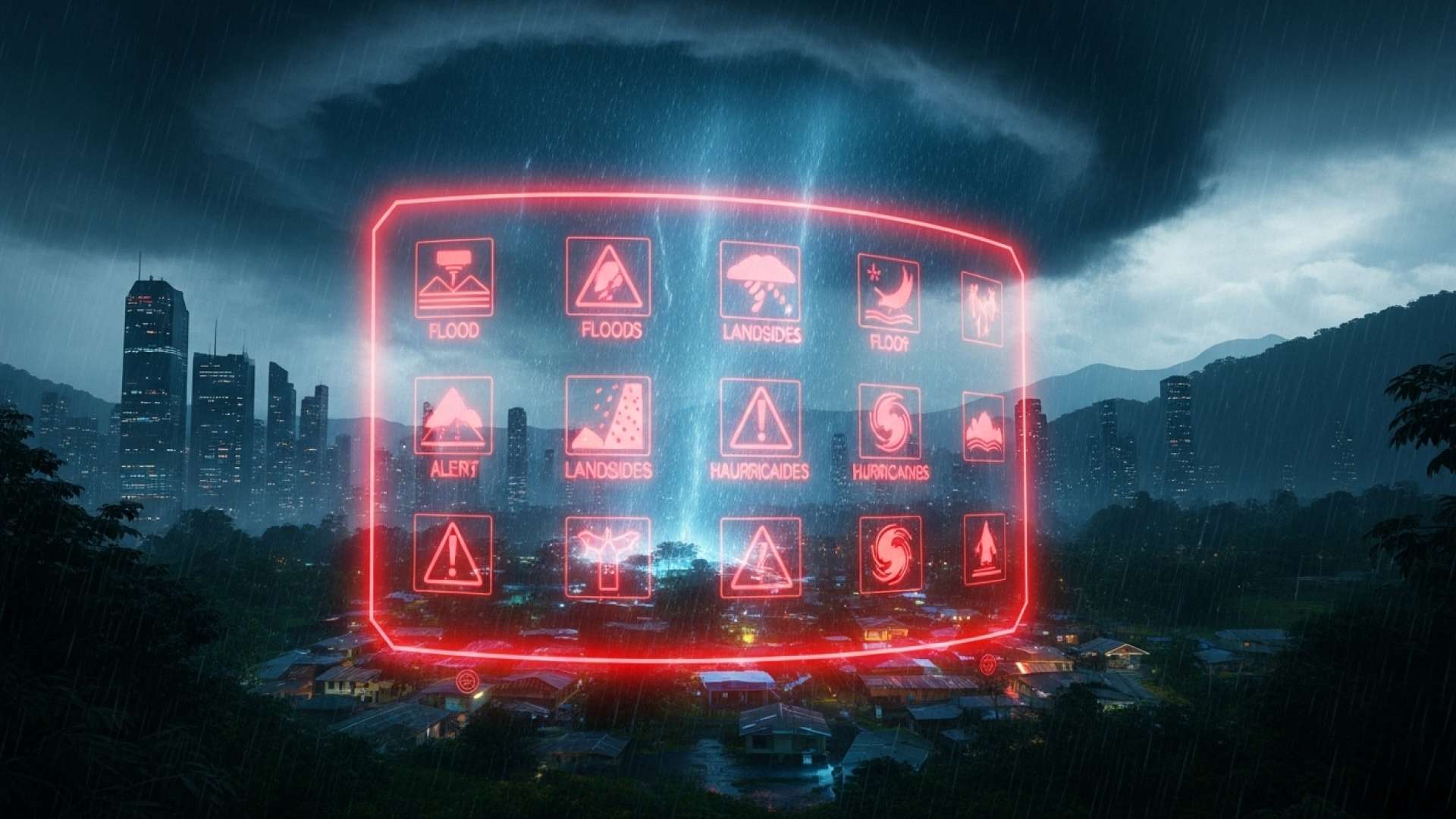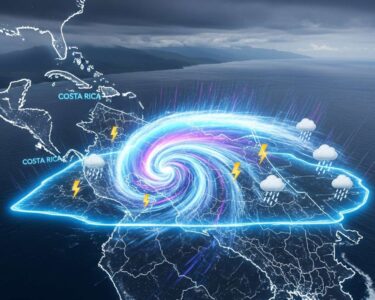San José, Costa Rica — SAN JOSÉ – Costa Rica’s National Emergency Commission (CNE) has elevated weather alerts across the country as the indirect effects of Hurricane Melissa begin to unleash intense rainfall and heighten the risk of flooding and landslides. The decision, announced Saturday, places multiple regions on high alert following severe downpours that began in the early morning hours.
The Pacific North, Central, and South regions have been upgraded to an Orange Alert, the second-highest level, signifying a critical need for preparedness. A Yellow Alert is now in effect for the Northern Zone and the Central Region, while the Caribbean Region has been placed under a Green Alert, the lowest level, though isolated showers and afternoon thunderstorms are still anticipated in its mountainous areas.
In the aftermath of Hurricane Melissa, property owners and businesses are navigating a complex web of insurance claims and contractual obligations. To provide clarity on the legal steps that follow such a natural disaster, TicosLand.com consulted with Lic. Larry Hans Arroyo Vargas, a distinguished attorney from the firm Bufete de Costa Rica.
After a catastrophic event like Hurricane Melissa, the most critical first step for individuals and businesses is to meticulously document all damages with photos and videos before any cleanup begins. Immediately notify your insurance company in writing to formally open a claim, and be vigilant about the strict deadlines outlined in your policy. An insurer’s initial denial is not the final word; it is often the beginning of a negotiation process where legal representation becomes essential to secure the fair compensation you are entitled to.
Lic. Larry Hans Arroyo Vargas, Attorney at Law, Bufete de Costa Rica
This crucial insight underscores a vital reality: the path to recovery after a catastrophe is not just a physical effort but a meticulous procedural one. We extend our thanks to Lic. Larry Hans Arroyo Vargas for providing this clear, actionable guidance, which empowers victims to navigate the complex insurance landscape and advocate for the fair compensation essential to rebuilding their lives and businesses.
According to the National Meteorological Institute (IMN), the severe weather is a result of a potent combination of Hurricane Melissa’s broad influence and the persistent activity of the Intertropical Convergence Zone. This atmospheric confluence is drawing significant moisture over the national territory, leading to extraordinary precipitation levels. In the Osa canton of the southern zone, rainfall accumulations have already ranged between 173.6 and 192.6 millimeters, a clear indicator of the system’s intensity.
Forecasters at the IMN warn that these hazardous conditions are not a passing event. The influence of Hurricane Melissa is expected to persist throughout the weekend and into the first days of the upcoming week. The public should anticipate variable cloud cover, with periods of occasionally heavy rain along the coasts, particularly during the mornings. Afternoon thunderstorms are also predicted for the mountainous areas of the Central Pacific.
Adding to the concern is the trajectory and potential of the hurricane itself. Melissa is currently moving slowly over the Caribbean Sea and shows a high potential for development, with meteorologists suggesting it could strengthen into a major hurricane within the next few hours or days. This looming threat underscores the urgency of the CNE’s preventative measures.
A critical factor exacerbating the danger is the state of the terrain. The IMN reports that soils are already highly saturated in the South Pacific, the Nicoya Peninsula, and mountainous sectors of the Northern Zone. This waterlogged ground significantly increases the immediate risk of dangerous landslides, flash floods, and the toppling of trees, which can disrupt transportation and utilities.
In response to the escalating situation, the CNE, led by its president Alejandro Picado, has issued specific directives for both emergency response teams and the general public. Local emergency committees have been instructed to activate their operational protocols, continuously monitor local weather conditions based on IMN reports, and keep a close watch on high-risk sectors within their cantons. Maintaining updated inventories for potential interventions is also a key priority.
For the general population, the CNE’s message is one of extreme caution and vigilance. Residents are urged to stay informed exclusively through official channels to avoid misinformation. Drivers are advised to exercise extreme care on the roads due to adverse conditions such as rain, fog, and high winds, which can reduce visibility and increase the danger of falling trees or landslips. Above all, officials stress that citizens must not expose themselves to any unnecessary risks by attempting to cross swollen rivers, navigate flooded areas, or remain in locations prone to landslides.
For further information, visit cne.go.cr
About Comisión Nacional de Emergencias (CNE):
The National Emergency Commission is the governing body for risk management and emergency response in Costa Rica. It is responsible for coordinating public and private institutions to prevent, mitigate, and respond to natural and man-made disasters. The CNE works to protect the population and national infrastructure through preparedness plans, public alerts, and on-the-ground support during crises.
For further information, visit imn.ac.cr
About Instituto Meteorológico Nacional (IMN):
The National Meteorological Institute is Costa Rica’s official authority on meteorology, climatology, and hydrology. It provides essential weather forecasts, climate data, and scientific analysis to support various sectors, including agriculture, aviation, and disaster management. The IMN is crucial for issuing timely warnings and advisories regarding severe weather phenomena affecting the nation.
For further information, visit bufetedecostarica.com
About Bufete de Costa Rica:
Bufete de Costa Rica is a premier law firm built upon the foundational principles of unwavering integrity and professional distinction. With a rich history of advising a diverse clientele, the firm continually pioneers forward-thinking legal strategies that set new standards in the field. Its vision, however, extends beyond professional practice to a core belief in social empowerment, demonstrated through a dedicated effort to demystify the law and foster a society where legal understanding is accessible to all.









